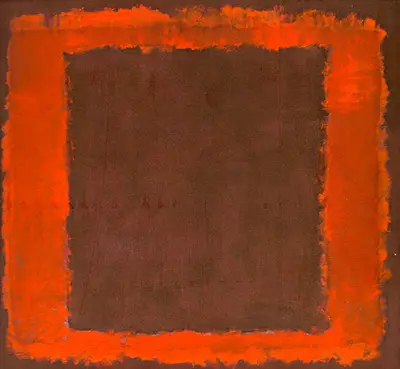The artist worked on a number of canvases with the final project in mind, but he never really decided on a specific plan for the restaurant. He would later gift the work that he did complete to several international art galleries, including ones in the US, UK and Japan. Rothko would abandon the project whilst still have a large number of related artworks, some of which might have been intended for the display - we simply do not know for sure which ones might have made it in. He brought in the idea of a frame motif within his work, replacing his famous lozenges of colour for a short period of time as he sought to bring a unique element to this commission, perhaps making use of architectural elements of the building in which it would have been hung. The frame or window shape allowed the background to show through the centre of each shape, giving a very different finish to what we had seen before.
It total, the artist would produce thirty different murals in preparation for completing the commission, though there was actually only room for around seven within the restaurant, such was the size of the canvases that he used. He gave us some clues as to which ones had been intended for use there in the way in which he labelled some of them for a New York retrospective in 1961 but nothing was ever confirmed and eventually the murals were never used for their original purpose. In the same year he took the murals to London where again they were displayed for a short period and he specifically asked for them to be displayed high and against a dark background which is presumably how they would have been installed within the restaurant. Artists have traditionally struggled with capitalist organisations and ideas, and so his decision to move away from the restaurant plan is fairly unsurprising.
Mark Rothko later decided to donate many of the Seagram Murals to the Tate in the UK. He had historically given away items from his career in order to help build public collections of international art museums and galleries but his decision to focus on the Tate was due to his personal love of the artist William Turner, a British painter whose career is well represented in that institution. Turner in fact had inspired many of the artists of whom we are entirely familiar, including also Claude Monet, who developed the painter's ideas into what would become the Impressionist movement, albeit alongside other influences as well. Rothko clearly shared this admiration and wanted to see some of his work displayed within the same building as the great British master.

